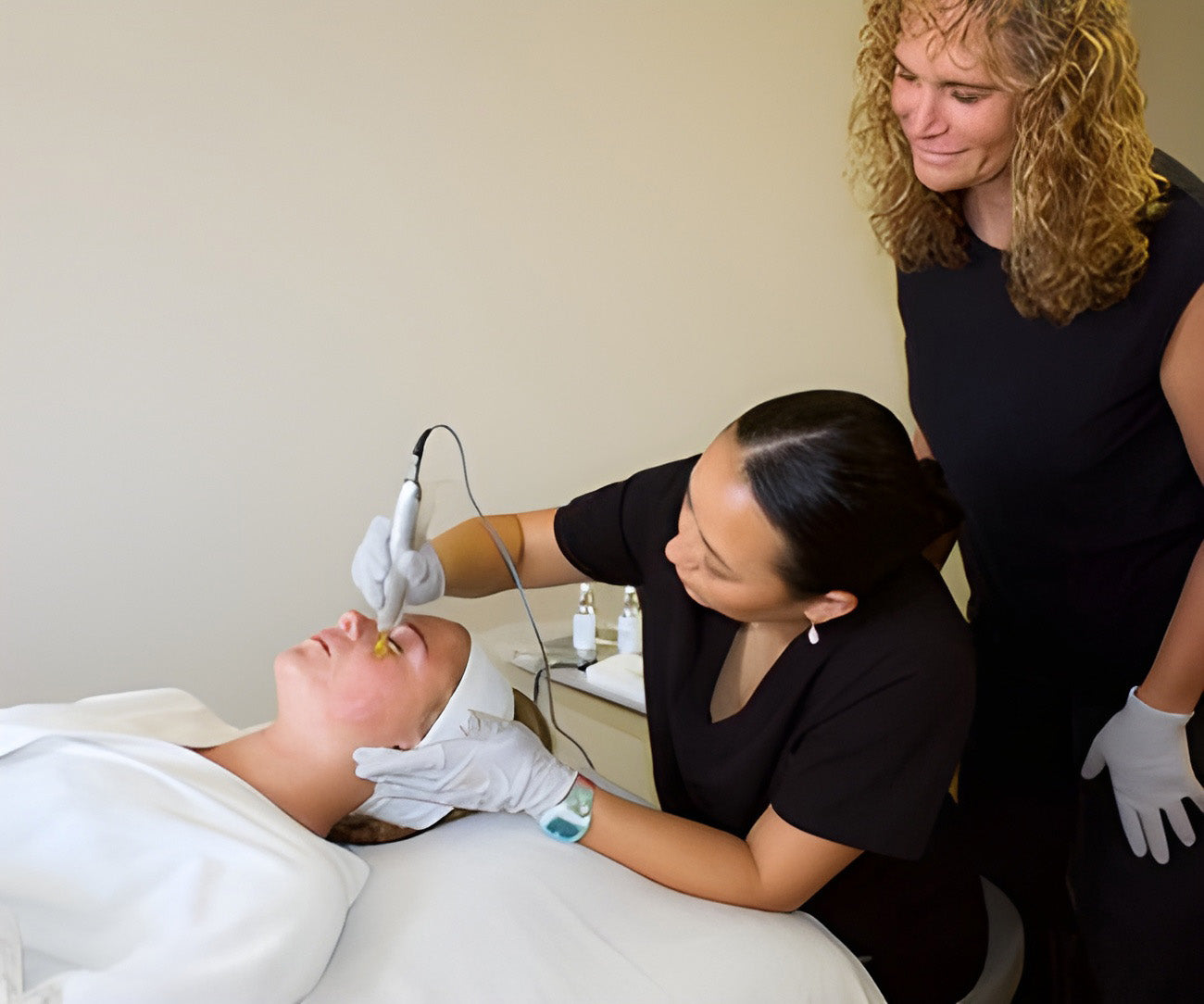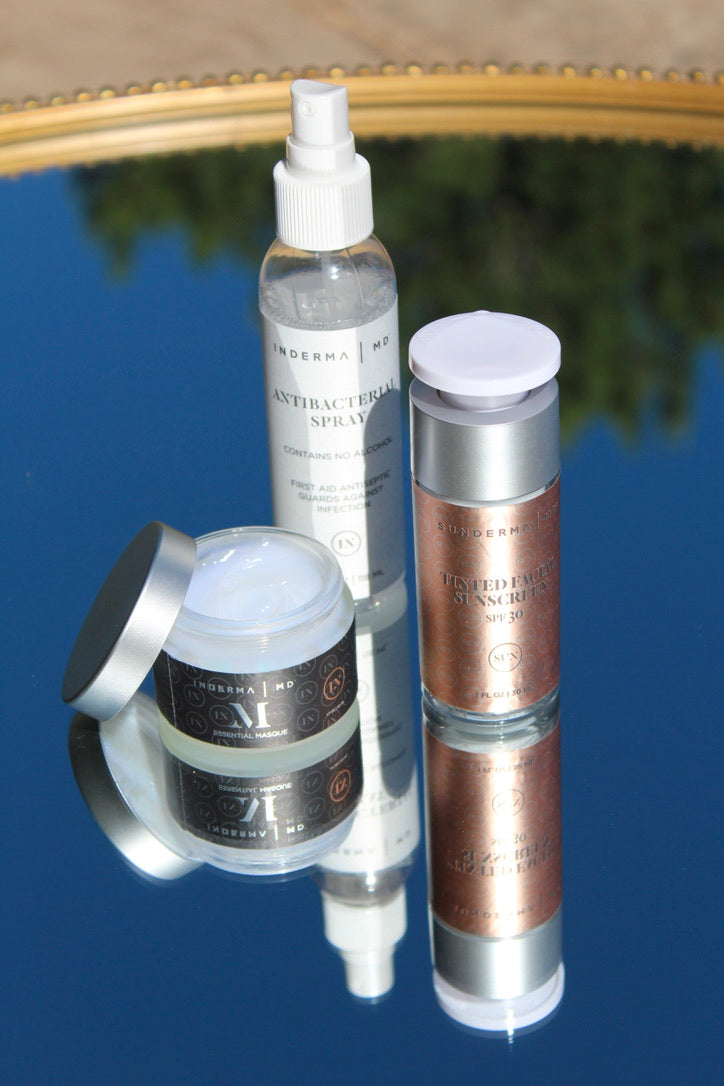 |
The delivery of biological and non-biological materials through the dermal barrier with the assistance or a microneedle device, known as microneedle transdermal delivery, is perhaps the most exciting emerging and potentially powerful uses of the Dermapen device. The creation of minute transient punctures in the dermal barrier will obviously facilitate the penetration of topically-applied materials.
One may perforate the skin and then apply a topical, or apply the topical first and use microneedling to drive material deep into the dermis, whereupon the holes would still facilitate further penetration. Crusting and re-epithelialization are rapid, as is healing. There is a window of perhaps ten minutes in which one may apply topicals before the microwounds begin to seal. Additionally, some materials are not meant to penetrate the barrier and could be dangerous if used.
There are specific advantages associated with transdermal microneedle delivery using Dermapen. The relative small size of the Dermapen treatment head allows users to tailor the size and shape of a potential delivery zone, as well as the density of microwounds in a given area, to modulate penetration of materials to some degree; use of the device in one area and leaving a nearby area untreated, or increased concentration of microwounding in a specific area, would theoretically allow more material to pass more quickly through the barrier in one area versus another. Also, modulation of wound depth (through choice of microneedle lengths) may also have an effect but this is untested. Additionally, any damage associated with microneedling induces apoptosis, rather than necrosis, so persistent excess inflammation is virtually non-existent;
Most importantly, however, is the fact that temporarily compromising barrier function with Dermapen allows users to bypass what’s known as the 500 Dalton Rule. Without Dermapen, topically applied materials must be lipophilic and less than 500 Daltons in molecular weight in order to slip through the skin. Microneedle transdermal delivery allows medical researchers to experiment with a much wider variety of materials, including hydrophilic compounds. A study applying a hydrophilic compound via patch with and without microneedle assistance showed measurable steady-state plasma levels of the drug with microneedle assisted delivery, versus no measureable blood levels without microneedle assistance.
Although this mode of delivery for topicals is still in its infancy, other therapies such as use of depigmenting serum in melasma treatment have been shown in the literature to be well enhanced by microneedle transdermal delivery.
Treatment of melasma is problematic because resolution is not a simple function of treatment for pigmentary clearance; hyperproliferation of melanin may not be adequately handled and the condition may simply persist on its own. Therapy begins by modulating exacerbating factors (such as reducing exposure to solar radiation or halting medication use) and then using depigmenting compounds or energy-based treatments to break up pigment and lighten skin in affected areas. Obviously, outcomes are limited in efficacy, vary greatly from patient to patient, and are difficult to reproduce. Although careful use of energy-based modalities may have benefit, risk of post-inflammatory hyperpigmentation (PIH) or further exacerbation of the condition make physicians less likely to employ such therapies. And due to the nature of melasma any effective treatment may require maintenance. A split face comparison of microneedle transdermal delivery of depigmenting serum versus serum alone showed significantly better outcomes with the enhanced transdermal delivery using two months daily application of sera after microneedle use.
Ziegler U, Groscurth P. Morphological features of cell death. Physiology 2004;19:124-128.
Fabbrocini G, De Vita V, Fardella N, et al. Skin needling to enhance depigmenting serum penetration in the treatment of melasma. Plast Surg Intl 2011;2011:Article ID 158241.
| Dermapen® Microneedling Devices are exclusively sold to Medical and Skin Care Professionals. Use the form to the right to get started finding a Certified Dermapen® practitioner in your area. |
| Medical Clinics and Spas can offer their patients the worlds most advanced microneedling treatments with Dermapen |
| The Dermapen Microneedling Pen provides an unparalleled response through the segmented delivery of microneedles, creating micro injuries to the epidermis (outer layer of skin) and dermis (the inner layer of skin). As a result, the micro injuries encourage the body’s innate ability to repair itself. | Every Dermapen tip is outfitted with 12 needles and features our patented technologies, which include SureSpace™ and SafLok™. Accordingly, these safety enhancements can be found in every Dermapen needle tip and pen. | Furthermore, by using SureSpace™ and SafLok™ microneedling pen technologies, practitioners can deliver their patients the safest microneedling treatment possible, while getting the best microneedling results for their patients. |




